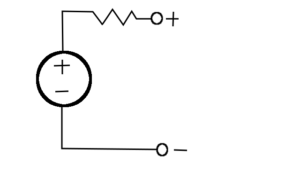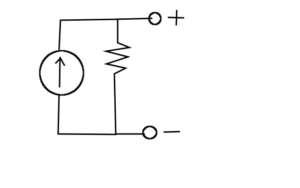One of the things that confused me about current was how batteries would specify a current on them even though the current is supposed to vary depending on the resistance based on ohm’s law.
So here’s how that actually works: there are two kinds of electrical power supplies: voltage sources, and current sources. Ideally voltage sources always offer the same voltage across them regardless of how little resistance you put across it, and ideally a current source will push the same current through a circuit regardless of how much resistance the circuit has.
If you place a really high resistance across a voltage source then the current going through the resistor will be low, an thus there will be very little power being used, and if you place a high resistance across a current source then the voltage across the resistor will be really high, while the current remains constant so it would be using quite a lot of power.
However in real life we don’t have ideal voltage and current sources. In real life voltage sources can be thought of as being like this:
As you can see a real voltage source is basically an ideal voltage source but with a resistor in series with it. This resistance is usually pretty low, but it means that if you short out the circuit then the voltage between the two terminals is zero. Also if you put too small of a resistance across it then the voltage goes down as the internal resistor of the voltage source is dropping almost all of the voltage.
If the current that your circuit is drawing is above the current that the power source specifies then that will blow up that resistor and/or the battery, or at the very least the voltage will drop.
In addition to voltage sources having a secret resistor, current sources have one too.
Usually the internal resistance of a current source is pretty high. What this means is that if you put a resistor across its terminals that has too high of a resistance, then you won’t get very much current because more of that current can go through the internal resistor.
Every power source has these flaws. Whether they’re batteries, electrical outlets, power adapters, solar panels, or whatever other crazy sources of electrical energy we come up with.

